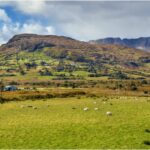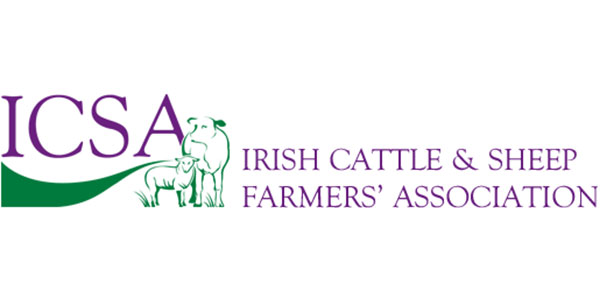7th January 2015
This article was first published in the Irish Independent Farming on January 6th, 2015
The imposition of serious fines on many farmers as a result of the LPIS review remains a source of extreme anger and frustration, especially in disadvantaged areas where the vast majority of penalties have been applied. Down here in West Cork and in neighbouring Kerry, difficult and marginal land has been the primary indicator of a likely penalty for a so-called overclaim.
Farmers first became aware of these penalties in the autumn of 2013 when letters started to issue accompanied by a new satellite image map with red lines outlining the apparently ineligible areas. The problem became acute for many farmers owing to the rules whereby penalties for overclaims get particularly serious once the area of overclaim exceeds 3% of the remaining eligible land. Where the overclaim hits 20% the penalty becomes 100%.
In my view, such levels of penalty were intended to ensure that farmers did not deliberately and fraudulently claim on land that they did not own or did not farm. It seems to me that to apply such penalties to marginal land that manifestly is in the ownership and is being managed by a farmer is inherently wrong.
It’s easy to look at arable land like you might find in Carlow or East Cork which can be ploughed easily from ditch to ditch and wonder what’s the problem. It seems to me that some bureaucrats in Brussels who have never ventured beyond the Paris Basin have some hand in this.
Ironically enough, the penalties for overclaims came in the same year that we had seen an unprecedented fodder crisis due to non-stop rain for much of 2012 and into May 2013, where land was simply not accessible in a lot of the west of Ireland.
While we might all aspire to the wall-to-wall ryegrass, for many farmers reality is making the most of rough mountain grazing or rocky outcrops. While expanses of bare rock are not eligible, in practice the reality is more complex. Rocks can protrude here and there and are not easily measured by the layman. A lot of ground can be rocky with a bare cover of soil.
In turn, furze and other bushes thrive easier than grass and mowing is not an option. In contrast, there is land which can’t be travelled in a wet year. Farmers have also been penalised for clumps of trees and in extreme cases, there is a grey area as to whether the ground underneath has been ruled ineligible because of shadows cast by the trees or because the ground has been reddened because cattle like to congregate there. Some land is actually partially eligible- eg 40% eligible- so how is a farmer or an inspector expected to assess this? At best it’s subjective.
There are also examples of land, which is described under environmental schemes as riparian margins (i.e. next to rivers). According to the environmentalist prescription, farmers should be encouraged to fence off this ground. According to the LPIS review, such ground should be treated with suspicion and there are examples of hectares of such ground being red-lined (i.e. ruled ineligible) based on the satellite imagery even where the farmer is actually grazing it.
For farmers, the message from a Pillar 1 perspective is to burn, bulldoze or reclaim in whatever way all such land. Yet from a Pillar 2 perspective the message is to cherish it. Indeed some of this land was deemed to be habitat in REPS plans. This is to say nothing of vast areas of land being designated such as the hen harrier and other natura sites. The EU continues to speak out of two sides of the mouth on biodiversity. In the new CAP, tillage farmers are required to have 5% ecological focus area, but for a disadvantaged area cattle or sheep farmer, the LPIS review has imposed treble penalties for more or less the same thing! I am aware that respected environmental organisations such as Birdwatch share concerns that the whole process is damaging to advancing biodiversity.
To add insult to injury, serious penalties have been imposed but the whole Department appeals process has proven not fit for purpose. Over 10,000 appeals have been lodged against penalties imposed on the 2013 single payment. By the end of 2014, over 2,000 of these appeals are still sitting on the shelves in Department offices. Justice delayed is justice denied! For these farmers, they have been forced to under-claim in 2014 pending the outcome of an extremely prolonged appeals process, meaning that potentially some have received reduced payments in 2014 which are not warranted on top of unjustified penalties in 2013.
What was particularly outrageous was the spin, which the Minister and his officials indulged in early on in the process where they repeatedly referred to “people who sold sites and did not make the necessary adjustment”. No evidence was forthcoming that this was in any way a significant reason for the overclaim penalties. I would suggest that at least 99.9% of farmers with an overclaim penalty have been penalised for reasons that have nothing whatsoever to do with selling a site.
Instead, the reality is that farmers are being scorned for being just what they are. For the vast majority their farming in 2013 was exactly similar to the farming they did in the reference years. On marginal land, with suckler and sheep enterprises, their single payment reflects the productivity of the land in 2000 and this has not changed since. So a farmer is being penalised for marginal land even though his single payment was already substantially lower than say a beef finisher on prime land in Leinster. It’s effectively a double penalty.
ICSA met with Commissioner Hogan on this issue before Christmas. The Commissioner seemed hopeful that threats of huge penalties to Ireland for their handling of land eligibility would not materialise to the extent cited by the Minister. It seems that the comprehensive review and imposition of penalties on farmers will provide grounds for mitigation.
However, the question that concerns me is what about the farmers in question. Apart from the massive penalties and the unacceptable delays in processing appeals, the cloud of further retrospective penalties lingers.
You really would have to wonder about the legality of the whole process. Is it correct to impose retrospective penalties? Is it fair to give farmers two competing ultimatums?
In the 2014 single payment application, farmers got maps, based on satellite images, with the red lines drawn in to indicate what the Department thought was ineligible.
Why did this happen in 2014 but not in 2013 or any previous year? It seems terribly unjust that farmers got satellite images for the 2013 application, which gave no clue as to what area was measured ineligible, and yet a different, more precise satellite image was used later in the year to measure ineligibility. It really smacks of moving the goalposts at half-time.
While it may sound paranoid to say it, many farmers on marginal land in the west of Ireland feel increasingly that they are not wanted. This raft of penalties, on top of the closure of REPS, the cuts in DAS payments and the difficulties with GLAS especially on commonages all contribute to a growing alienation. I organised a protest outside the Minister’s office before Christmas with one simple request- come down and meet the people on the ground and see for yourself what is going on.
Dermot Kelleher, ICSA suckler chairman & West Cork ICSA chairman






